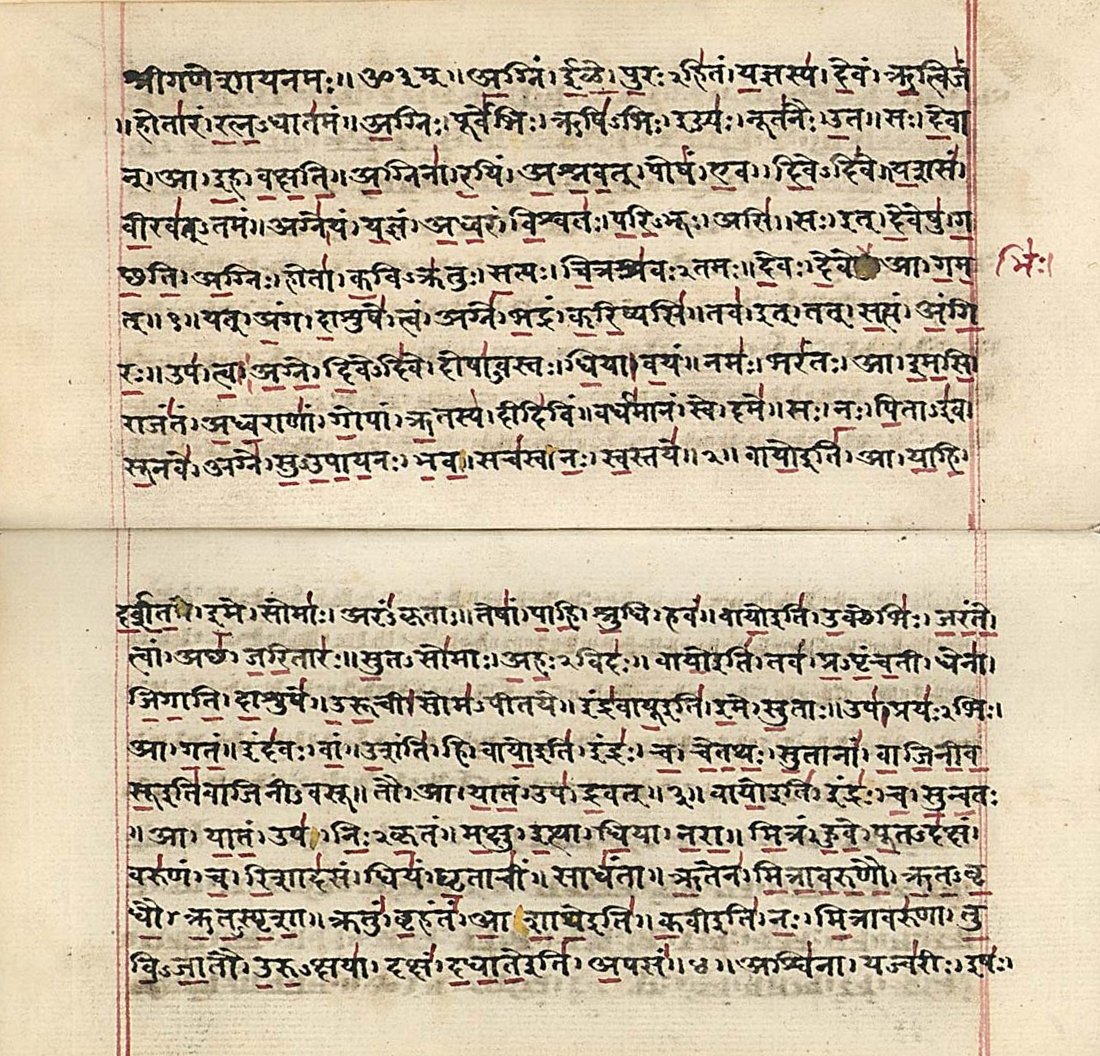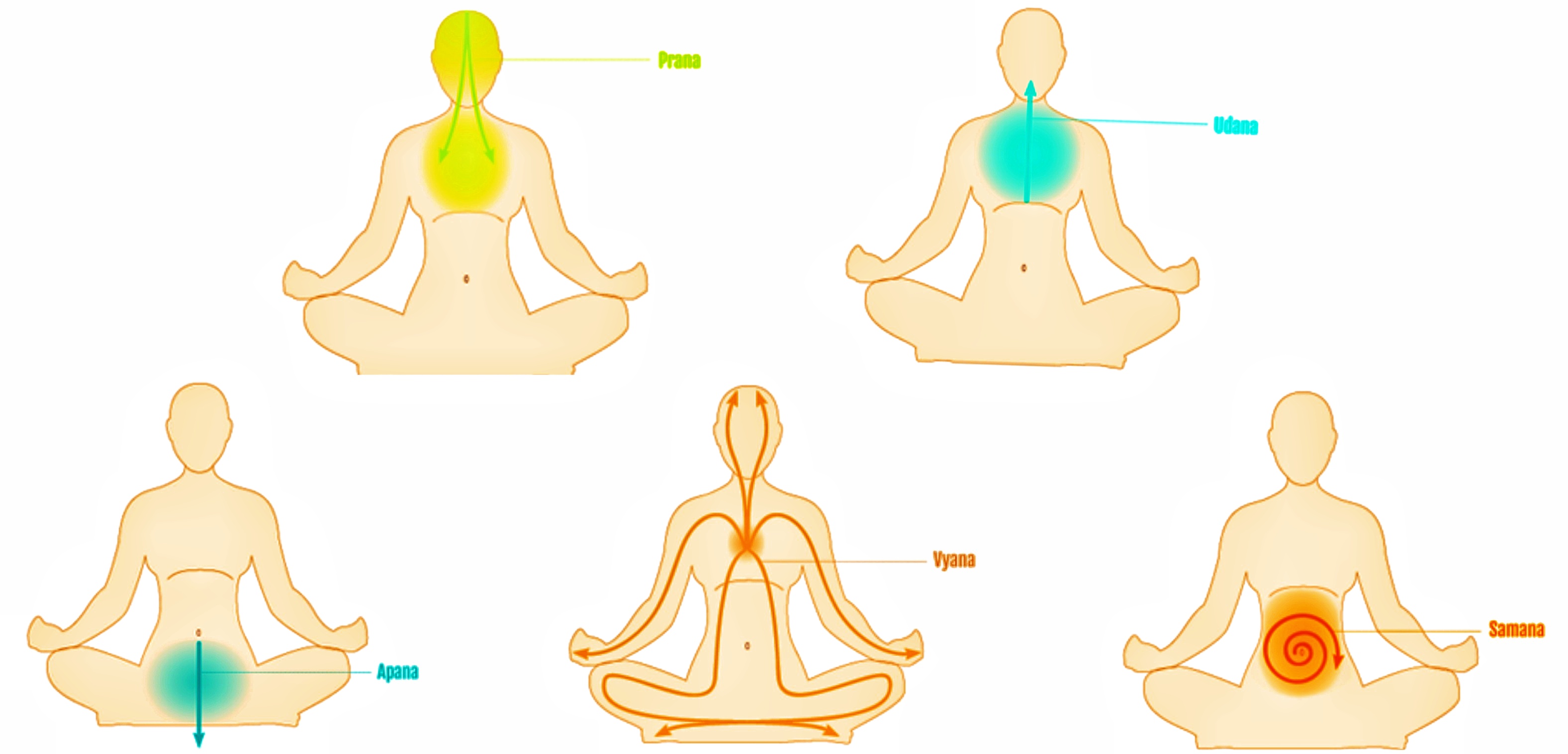|
Mayabheda
Mayabheda, (Sanskrit:मायाभेद:), means the breaching or removal of Avidya ("ignorance"). It means the destruction of the illusion caused by Maya which occurs coinciding with the gain/dawn of Right Knowledge, the knowledge of Brahman. The Rig Veda Sukta R.V.X.177 addressed to Mayabheda in its three Mantras in its own cryptic way serves this purpose. The central theme of this hymn is the discernment of Maya or illusion, the cause of material creation. Mayabheda is also one of the Rigvedic deities. About Sukta R.V.X.177 The Rig Veda is an ancient anthology of Sanskrit poems mostly in the form of prayers to the Vedic gods. It consists of Ten Books or Mandalas. The Tenth Mandala contains 191 Suktas addressed to Agni, Indra and many other deities. The Purusha sukta (R.V.90), the Hiranyagarbha sukta (R.V.X.121) and the Nasadiya Sukta (R.V.X.129) are a part of this Mandala in which there are many more important hymns. The Tenth Mandala of the Rig Veda also contains Suk ... [...More Info...] [...Related Items...] OR: [Wikipedia] [Google] [Baidu] |
Maya (illusion)
''Maya'' (; Devanagari: , IAST: ), literally "illusion" or "magic", has multiple meanings in Indian philosophies depending on the context. In later Vedic texts, connotes a "magic show, an illusion where things appear to be present but are not what they seem"; the principle which shows "attributeless Absolute" as having "attributes". also connotes that which "is constantly changing and thus is spiritually unreal" (in opposition to an unchanging Absolute, or Brahman), and therefore "conceals the true character of spiritual reality".Lynn Foulston and Stuart Abbott (2009), ''Hindu Goddesses: Beliefs and Practices'', Sussex Academic Press, , pp. 14-16. In the Advaita Vedanta school of Hindu philosophy, , "appearance", is "the powerful force that creates the cosmic illusion that the phenomenal world is real." In this nondualist school, at the individual level appears as the lack of knowledge () of the real Self, '' Atman-Brahman'', mistakingly identifying with the body-mind ... [...More Info...] [...Related Items...] OR: [Wikipedia] [Google] [Baidu] |
Rig Veda
The ''Rigveda'' or ''Rig Veda'' ( ', from ' "praise" and ' "knowledge") is an ancient Indian collection of Vedic Sanskrit hymns (''sūktas''). It is one of the four sacred canonical Hindu texts ('' śruti'') known as the Vedas. Only one Shakha of the many survive today, namely the Śakalya Shakha. Much of the contents contained in the remaining Shakhas are now lost or are not available in the public forum. The ''Rigveda'' is the oldest known Vedic Sanskrit text. Its early layers are among the oldest extant texts in any Indo-European language. The sounds and texts of the ''Rigveda'' have been orally transmitted since the 2nd millennium BCE. Philological and linguistic evidence indicates that the bulk of the ''Rigveda'' Samhita was composed in the northwestern region of the Indian subcontinent (see) Rigvedic rivers), most likely between 1500 and 1000 BCE, although a wider approximation of 19001200 BCE has also been given. The text is layered, consisting ... [...More Info...] [...Related Items...] OR: [Wikipedia] [Google] [Baidu] |
Sukta
The ''Rigveda'' or ''Rig Veda'' ( ', from ' "praise" and ' "knowledge") is an ancient Indian collection of Vedic Sanskrit hymns (''sūktas''). It is one of the four sacred canonical Hindu texts (''śruti'') known as the Vedas. Only one Shakha of the many survive today, namely the Śakalya Shakha. Much of the contents contained in the remaining Shakhas are now lost or are not available in the public forum. The ''Rigveda'' is the oldest known Vedic Sanskrit text. Its early layers are among the oldest extant texts in any Indo-European language. The sounds and texts of the ''Rigveda'' have been orally transmitted since the 2nd millennium BCE. Philological and linguistic evidence indicates that the bulk of the ''Rigveda'' Samhita was composed in the northwestern region of the Indian subcontinent (see) Rigvedic rivers), most likely between 1500 and 1000 BCE, although a wider approximation of 19001200 BCE has also been given. The text is layered, consisting of the ' ... [...More Info...] [...Related Items...] OR: [Wikipedia] [Google] [Baidu] |
Rigvedic Deities
Rigvedic deities are Deity, deities mentioned in the sacred texts of Rigveda, the principal text of the historical Vedic religion of the Vedic period (1500–500 BCE). There are 1,028 Hymn, hymns (sūkta) in the Rigveda. Most of these hymns are dedicated to specific deities. The most prominent deity is Indra, slayer of Vritra and destroyer of the Vala (Vedic), Vala, liberator of the cows and the rivers; Agni the sacrificial fire and messenger of the gods; and Soma (drink), Soma, the ritual drink dedicated to Indra, are additional principal deities. Deities by prominence List of Rigvedic deities by a number of dedicated hymns, after Griffith. Some dedications are to paired deities, such as Indra-Agni, Mitra-Varuna, Soma-Rudra, here counted double. Vishvadevas (all gods together) have been invoked 70 times. *Indra 250 *Agni 200 *Soma (drink), Soma 123 *Aśvins 56 *Varuna 46 *Maruts 38 *Mitra (Vedic), Mitra 28 *Ushas 21 *Vayu (Wind) 12 *Savitr 11 *the Rbhus 11 *Pushan 10 *the Apris ... [...More Info...] [...Related Items...] OR: [Wikipedia] [Google] [Baidu] |
Mandala 10
The tenth mandala of the Rigveda has 191 hymns. Together with Mandala 1, it forms the latest part of the Rigveda, containing much mythological material, including the Purusha sukta (10.90) and the dialogue of Sarama with the Panis (10.108), and notably containing several dialogue hymns. The subjects of the hymns cover a wider spectrum than in the other books, dedicated not only to deities or natural phenomena, including deities that are not prominent enough to receive their own hymns in the other books ( Nirrti 10.59, Asamati 10.60, Ratri 10.127, Aranyani 10.146, Indrani 10.159), but also to objects like dice (10.34), herbs (10.97), press-stones (for Soma, 10.94, 175) and abstract concepts like liberality (towards the rishi, 10.117), creation (10.129 (the Nasadiya Sukta), 130, 190), knowledge (10.71), speech, spirit (10.58), faith (10.151), a charm against evil dreams (10.164). 10.15, dedicated to the forefathers, contains a reference to the emerging rite of cremation in ... [...More Info...] [...Related Items...] OR: [Wikipedia] [Google] [Baidu] |
Sanskrit
Sanskrit (; attributively , ; nominalization, nominally , , ) is a classical language belonging to the Indo-Aryan languages, Indo-Aryan branch of the Indo-European languages. It arose in South Asia after its predecessor languages had Trans-cultural diffusion, diffused there from the northwest in the late Bronze Age#South Asia, Bronze Age. Sanskrit is the sacred language of Hinduism, the language of classical Hindu philosophy, and of historical texts of Buddhism and Jainism. It was a lingua franca, link language in ancient and medieval South Asia, and upon transmission of Hindu and Buddhist culture to Southeast Asia, East Asia and Central Asia in the early medieval era, it became a language of religion and high culture, and of the political elites in some of these regions. As a result, Sanskrit had a lasting impact on the languages of South Asia, Southeast Asia and East Asia, especially in their formal and learned vocabularies. Sanskrit generally connotes several Indo-Aryan lang ... [...More Info...] [...Related Items...] OR: [Wikipedia] [Google] [Baidu] |
Mantra
A mantra ( Pali: ''manta'') or mantram (मन्त्रम्) is a sacred utterance, a numinous sound, a syllable, word or phonemes, or group of words in Sanskrit, Pali and other languages believed by practitioners to have religious, magical or spiritual powers. Feuerstein, Georg (2003), ''The Deeper Dimension of Yoga''. Shambala Publications, Boston, MA Some mantras have a syntactic structure and literal meaning, while others do not. The earliest mantras were composed in Vedic Sanskrit in India. At its simplest, the word ॐ (Aum, Om) serves as a mantra, it is believed to be the first sound which was originated on earth. Aum sound when produced creates a reverberation in the body which helps the body and mind to be calm. In more sophisticated forms, mantras are melodic phrases with spiritual interpretations such as a human longing for truth, reality, light, immortality, peace, love, knowledge, and action. Some mantras without literal meaning are musically uplifting ... [...More Info...] [...Related Items...] OR: [Wikipedia] [Google] [Baidu] |
Indrajala
Indrajala (Sanskrit: इन्द्रजाल) is a Sanskrit word common to most Indian languages that means Indra's net, magic, deception, fraud, illusion, conjuring, jugglery, sorcery etc. In Hinduism the first creator of ''maya'' in this universe was Indra. The term ''Indrajala'' was used instead of ''maya'' in the ancient days. Since Indra represents God and God's creation of this universe can be considered a magical act, this whole world is ''Indrajala'' (a net of Indra), an illusion. In a similar fashion, the human magician applies the magic called ''Indrajala'' in imitation of his divine forerunners, and thus spreads his net of ''maya'' over those he chooses as the object of his manipulations. He creates something before the eyes of the spectators that does not really exist, or only exist in the spectators’ minds as a result of his skill. If one confines ''Indrajala'' to its stricter sense of illusory appearances created for the public, it is understandable that this a ... [...More Info...] [...Related Items...] OR: [Wikipedia] [Google] [Baidu] |
Moksha
''Moksha'' (; sa, मोक्ष, '), also called ''vimoksha'', ''vimukti'' and ''mukti'', is a term in Hinduism, Buddhism, Jainism and Sikhism for various forms of emancipation, enlightenment, liberation, and release. In its soteriological and eschatological senses, it refers to freedom from ''saṃsāra'', the cycle of death and rebirth. In its epistemological and psychological senses, ''moksha'' is freedom from ignorance: self-realization, self-actualization and self-knowledge. In Hindu traditions, ''moksha'' is a central concept and the utmost aim of human life; the other three aims being ''dharma'' (virtuous, proper, moral life), '' artha'' (material prosperity, income security, means of life), and '' kama'' (pleasure, sensuality, emotional fulfillment). Together, these four concepts are called Puruṣārtha in Hinduism. In some schools of Indian religions, ''moksha'' is considered equivalent to and used interchangeably with other terms such as ''vimoksha'', ''vimu ... [...More Info...] [...Related Items...] OR: [Wikipedia] [Google] [Baidu] |
Jiva
''Jiva'' ( sa, जीव, IAST: ) is a living being or any entity imbued with a life force in Hinduism and Jainism. The word itself originates from the Sanskrit verb-root ''jīv'', which translates as 'to breathe' or 'to live'. The ''jiva'', as a metaphysical entity, has been described in various scriptures such as the Bhagavad Gita and the Upanishads. Each subschool of Vedanta describes the role of the ''jiva'' with the other metaphysical entities in varying capacities. Described in the scriptures A common metaphysical entity discussed in the scriptures (such as the Bhagavad Gita, Upanishad and Vachanamrut) in the seven schools of Vedanta is the ''jiva'' or ''atman'': the soul or self. Bhagavad Gita Chapter 2 of the Bhagavad Gita contains verses describing the ''jiva''. For example, the ''jiva'' is described as eternal and indestructible in chapter 2, verse 20: Upanishads बालाग्रशतभागस्य शतधा कल्पितस्य च । � ... [...More Info...] [...Related Items...] OR: [Wikipedia] [Google] [Baidu] |
Prana
In yoga, Indian medicine and Indian martial arts, prana ( sa2, प्राण, ; the Sanskrit word for breath, " life force", or "vital principle") permeates reality on all levels including inanimate objects. In Hindu literature, prāṇa is sometimes described as originating from the Sun and connecting the elements. Five types of prāṇa, collectively known as the five '' vāyus'' ("winds"), are described in Hindu texts. Ayurveda, tantra and Tibetan medicine all describe ''prāṇa vāyu'' as the basic vāyu from which the other vāyus arise. Prana is divided into ten main functions: The five Pranas – Prana, Apana, Udana, Vyana and Samana – and the five Upa-Pranas – Naga, Kurma, Devadatta, Krikala and Dhananjaya. Pranayama, one of the eight limbs of yoga, is intended to expand prana. Etymology V. S. Apte provides fourteen different meanings for the Sanskrit word ' () including breath or respiration; the breath of life, vital air, principle of life (usually pl ... [...More Info...] [...Related Items...] OR: [Wikipedia] [Google] [Baidu] |
.png)

